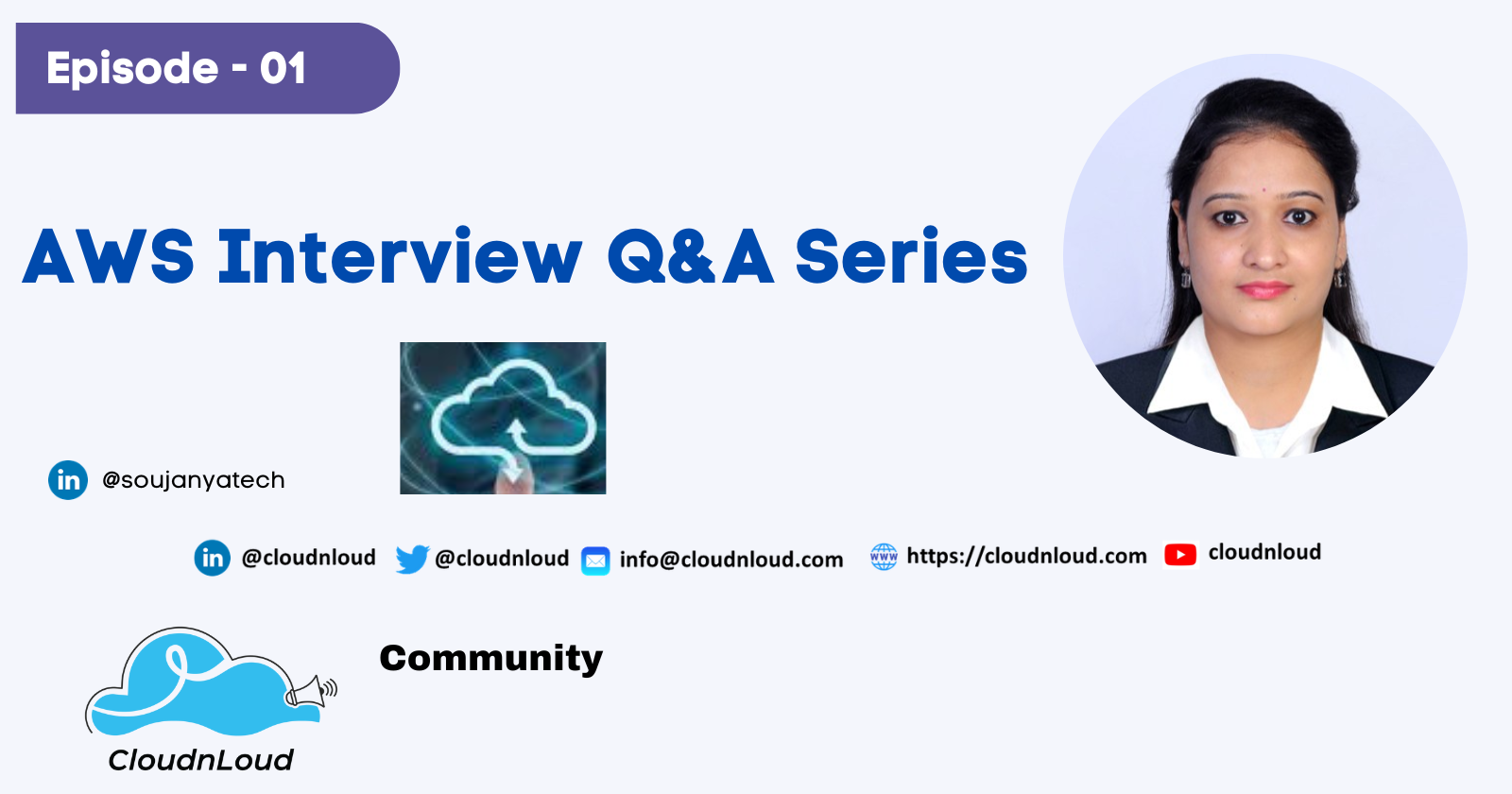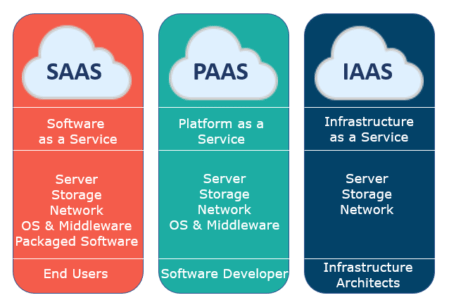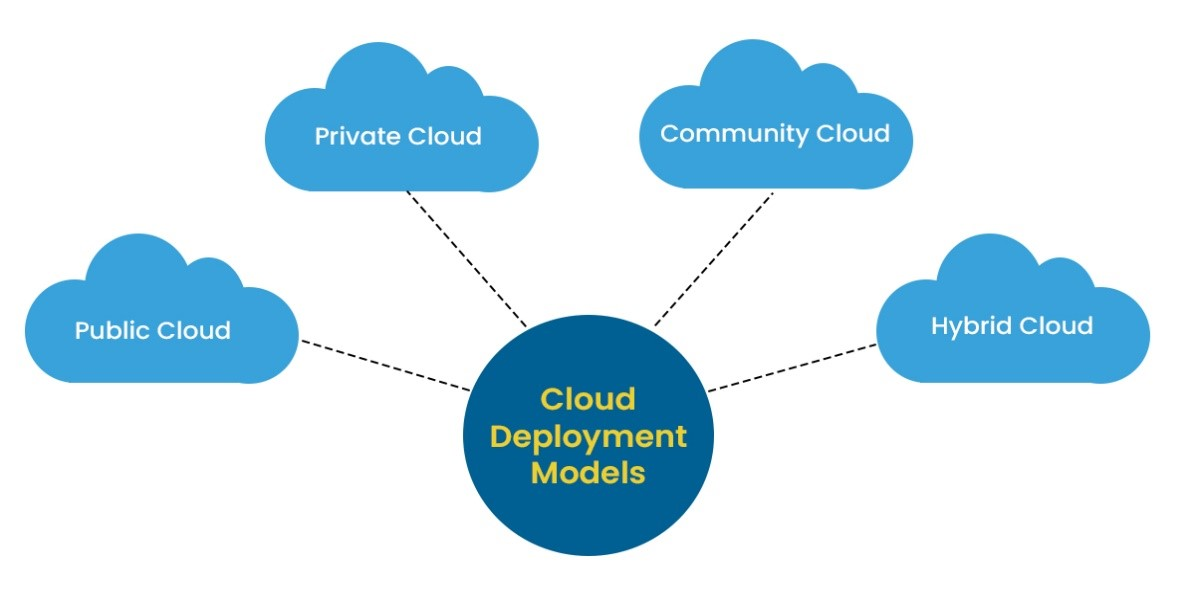AWS Interview Question and Answers Series -1
 soujanya ganti
soujanya gantiTable of contents

1. What do you know about cloud computing?
A cloud is a combination of services, networks, hardware, storage, and interfaces that help provide calculation as a service. It comprises roughly three users. These are the end-user, the operational management, and the cloud service provider. The end-user is the one that uses the services delivered by the cloud. The Responsibility for data and services provided by the cloud is taken by the cloud-based business management user. The cloud provider is the one that manages or is responsible for maintaining the cloud's computing assets. Cloud serves as a common center for its users to satisfy their IT requirements.

2.What are some of the most important characteristics of cloud computing?
Agility: Assists in replenishing resources quickly and inexpensively.
Independent localization: This means that resources can be consulted from anywhere.
Multimodality: Resources are shared between a wide range of users.
Reliability: Resources and calculations can be reliable when it comes to affordability.
Scalable: Dynamic data provisioning facilitates scaling.
3.What do you know about cloud delivery models?
Infrastructure as a Service (IaaS): Infrastructure as a Service (IaaS) is the provision of services, including an operating system, storage, networking and a variety of utility software items, upon request.
Platform as a Service (PaaS): Platform as a Service (PaaS) could be a mechanism for combining Infrastructure as a Service with Associate in Nursing abstracted set of middleware services, package development, and readying tools. It allows the organization to be consistent through the production and deployment of applications on a cloud environment or on the website.
Software as a Service (SaaS):Software as a Service (SaaS) is a commercial application developed and hosted by a vendor within a multi-tenant model.

4. What are the various cloud releases?
Public Cloud: All hardware, network, storage, services, applications, and interfaces held and operated by a third party for the use of other businesses or individuals in the public cloud. These business providers create a highly scalable data center that hides details about the client's underlying infrastructure. Public clouds are viable because they offer many options for calculating, storing, and a rich set of other services.
Private Cloud: The set of hardware, networking, storage, services, applications, and interfaces closely held and operated by a corporation for the utilization of its workers, partners, or customers is the non-public cloud. This can be created and administered by a third party for the exclusive use of a company. The private. cloud is a highly controlled environment not open to government consumption. So, it. sits behind a firewall.
Hybrid Cloud: Most businesses use a combination of private IT resources and utilities, referred to as the hybrid cloud environment.
Multi-Cloud: In addition, some businesses also use a variety of public cloud services to support different developers and business units – known as a multi-cloud environment.

5. Which are the principal components of the cloud ecosystem?
- Cloud Buyer
- Direct Consumer
- Cloud vendors
6.Who are cloud users in a cloud ecosystem?
Individuals and groups in your business unit who use different types of cloud services to perform a task. A cloud consumer could be a developer using computing services out of a public cloud.
7. Who are the direct clients in a cloud environment?
Users who frequently benefit from the services your company has created in a cloud environment. End users of your service do not know whether you are using a public or private cloud. While users are involved, they interact directly with services and value.
8. Who are the cloud providers within a cloud-based ecosystem?
Cloud service providers are commercial providers or businesses that create their own capacities. Commercial providers sell to customers in the cloud. In distinction to the present, an organization would possibly conceive to become an inside cloud service supplier to its own partners, employees, and customers, either as an inside service or as a profit center. Cloud vendors also develop applications or services for these environments.
9. What are cloud-based storage levels?
Files - These are data sets that are grouped together into files in folders.
Blocks – A block is the smallest unit of data available to individual users. This is the lowest storage level and nearest to the equipment.
Datasets – Datasets arranged in tables, boundaries, or records.
Objects - Data and related metadata are organized into web assets.
Each of these data storage levels is combined with a certain kind of technical interface. This interface corresponds to a specific type of cloud-based storage device and cloud-based storage service used to expose its API.
10. What are server-free components within the cloud?
Serverless components in cloud computing make it possible to build applications without the complexity of managing the infrastructure. It is possible to write code without having to supply it to a server.
Machines without a server are responsible for virtual machines and container management. Components with no server are also responsible for multi-threading hardware allocation.
11. What are the benefits and drawbacks of serverless computing?
Benefits:
It is economically viable.
Operations on the server-less calculation are made easier.
Server-free computing helps raise productivity.
It offers scaling choices.
Draw Backs:
Server-less code may cause response delay.
It is not ideal for intensive calculation operations because of resource constraints.
For server-less computing, the responsibility for security lies with the service provider rather than the consumer, who may be more vulnerable.
Debugging server code is a bit more difficult.
Community and Social Footprints :
Subscribe to my newsletter
Read articles from soujanya ganti directly inside your inbox. Subscribe to the newsletter, and don't miss out.
Written by

soujanya ganti
soujanya ganti
Software Engineer having experience of 5+ years, committed to maintain cutting edge technical skills and up-to date industry knowledge. Technical skills and Experience: Configuration and Deployment Engineer Cloud : Aws,Azure CI/CD : Jenkins Configuration Management : Ansible Repositories : Git Scripting : Bash Containerization : Docker, Kubernetes Infrastructure As Code : Terraform OS : LinuxDevOps